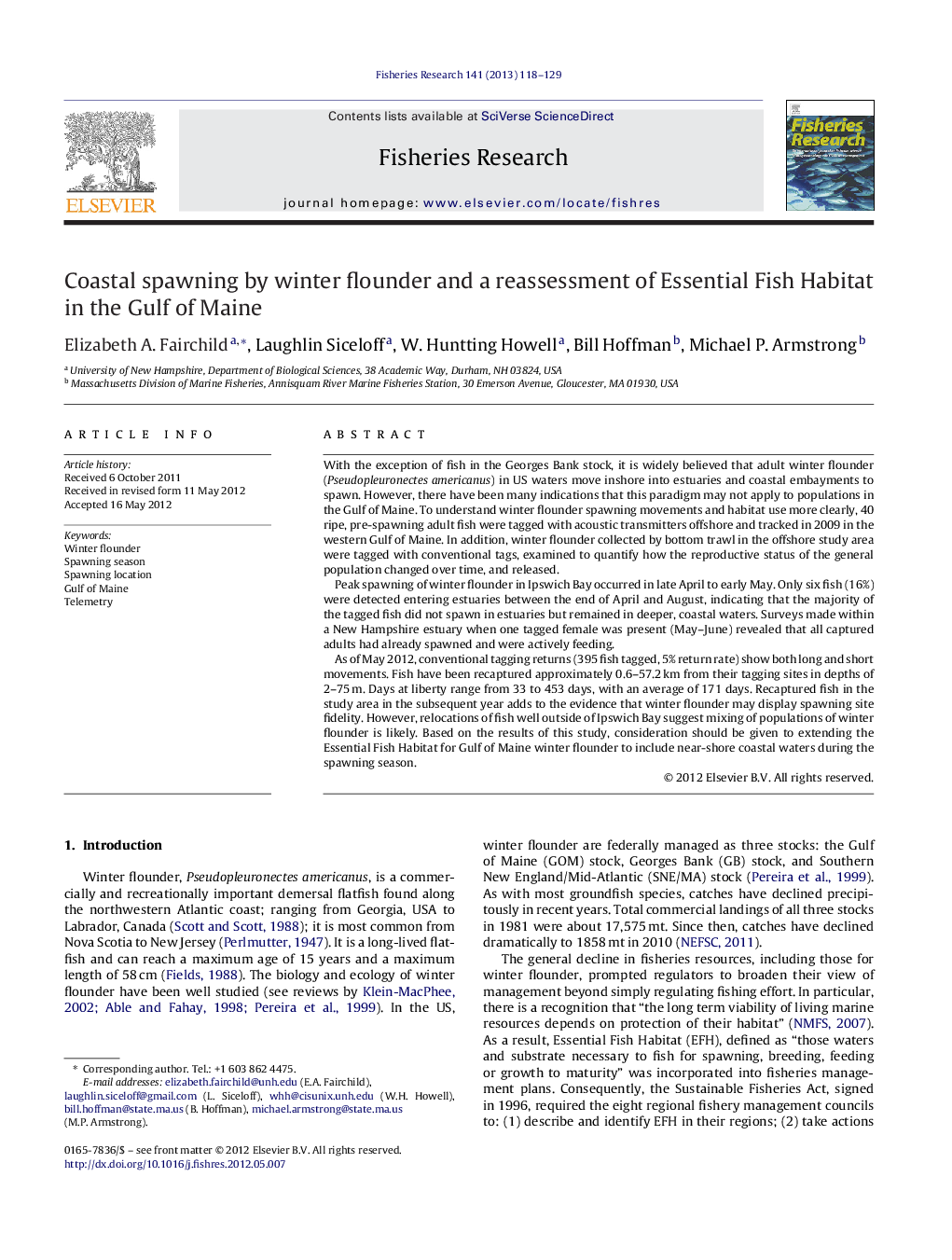| Article ID | Journal | Published Year | Pages | File Type |
|---|---|---|---|---|
| 4543188 | Fisheries Research | 2013 | 12 Pages |
With the exception of fish in the Georges Bank stock, it is widely believed that adult winter flounder (Pseudopleuronectes americanus) in US waters move inshore into estuaries and coastal embayments to spawn. However, there have been many indications that this paradigm may not apply to populations in the Gulf of Maine. To understand winter flounder spawning movements and habitat use more clearly, 40 ripe, pre-spawning adult fish were tagged with acoustic transmitters offshore and tracked in 2009 in the western Gulf of Maine. In addition, winter flounder collected by bottom trawl in the offshore study area were tagged with conventional tags, examined to quantify how the reproductive status of the general population changed over time, and released.Peak spawning of winter flounder in Ipswich Bay occurred in late April to early May. Only six fish (16%) were detected entering estuaries between the end of April and August, indicating that the majority of the tagged fish did not spawn in estuaries but remained in deeper, coastal waters. Surveys made within a New Hampshire estuary when one tagged female was present (May–June) revealed that all captured adults had already spawned and were actively feeding.As of May 2012, conventional tagging returns (395 fish tagged, 5% return rate) show both long and short movements. Fish have been recaptured approximately 0.6–57.2 km from their tagging sites in depths of 2–75 m. Days at liberty range from 33 to 453 days, with an average of 171 days. Recaptured fish in the study area in the subsequent year adds to the evidence that winter flounder may display spawning site fidelity. However, relocations of fish well outside of Ipswich Bay suggest mixing of populations of winter flounder is likely. Based on the results of this study, consideration should be given to extending the Essential Fish Habitat for Gulf of Maine winter flounder to include near-shore coastal waters during the spawning season.
► Winter flounder exhibit seasonal spawning movements from offshore to inshore. ► Most fish tagged with acoustic transmitters did not spawn in estuaries. ► Recaptured fish suggests that winter flounder may display spawning site fidelity. ► Mixing of populations of winter flounder is likely.
